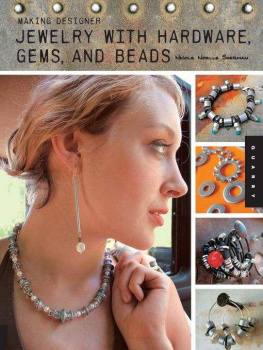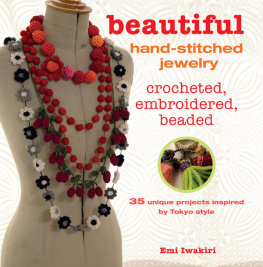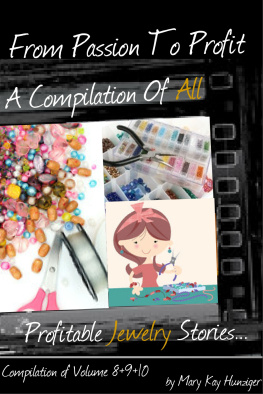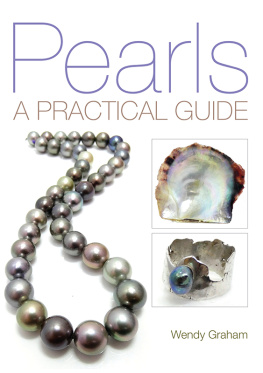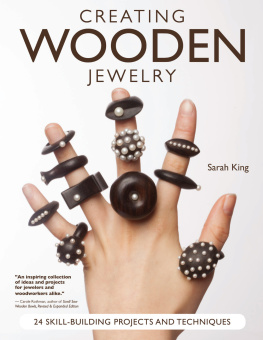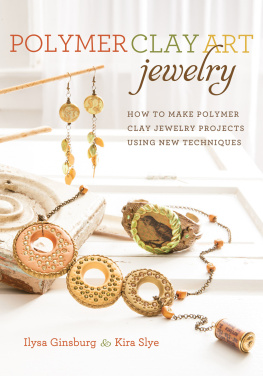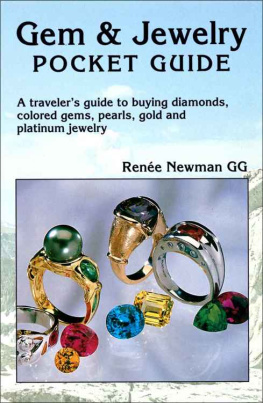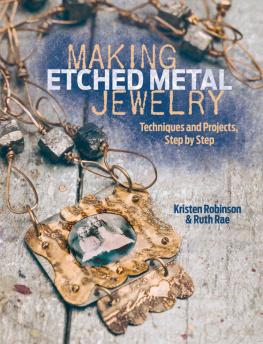Table of Contents
2006 by Quarry Books
All rights reserved. No part of this book may be reproduced in any form without written permission of the copyright owners. All images in this book have been reproduced with the knowledge and prior consent of the artists concerned, and no responsibility is accepted by producer, publisher, or printer for any infringement of copyright or otherwise, arising from the contents of this publication. Every effort has been made to ensure that credits accurately comply with information supplied. We apologize for any inaccuracies that may have occurred and will resolve inaccurate or missing information in a subsequent reprinting of the book.
First published in the United States of America by
Quarry Books, a member of
Quayside Publishing Group
33 Commercial Street, Gloucester, Massachusetts 01930-5089
Telephone: (978) 282-9590 / Fax: (978) 283-2742
www.rockpub.com
Library of Congress Cataloging-in-Publication Data
Sherman, Nicole Noelle.
Making designer freshwater pearl jewelry : with a special section on custom wedding jewelry /
Nicole Noelle Sherman.
p. cm.
ISBN 1-59253-269-1 (pbk.)
1. Jewelry making. 2. Pearls. I. Title.
TT212.S54 2006
745.5942dc22 2006003614
CIP
ISBN-13:978-1-59253-269-8
ISB N-1 0:1-59253-269-1
10 9 8 7 6 5 4 3 2 1
Design by Lori Wendin
Production by Todd Fairchild
Photography by Allan Penn
Material on pages 30-32 and 34 adapted from Making Designer Gemstone & Pearl Jewelry .
2003 by Rockport Publishers, Inc.
Photographs on pages 9 and 11 courtesy of Tennessee River Freshwater Pearl Farm,
www.tennesseeriverpearls.com.
Illustrations by Judy Love
Printed in Singapore
To Arianna and Porter: The most creative people I know.
The ancientsawed by the mystery of lustrous gems being created inside living organismsthought pearls were gifts from the gods.
Introduction
Throughout time, people have been fascinated and bewitched by the pearls luster, purity, and perfection. No one knows for certain when the first pearls were discovered or when they became objects of adornment, but it is clear they have been highly valued since their discovery. Pearls are found in nature in a finished state. Unlike gemstones, they need no cutting to reveal their splendor. This quality has enabled naturally occurring pearls to have value immediately, and it has also given them a certain mystique. In fact, the ancientsawed by the mystery of lustrous gems being created inside living organismsthought that pearls were gifts from the gods.
Natural pearls have been featured in jewelry beginning with the earliest civilizations. Rare, lustrous pearls have adorned kings and queens, first ladies, and movie stars. Queen Elizabeth I was such an admirer of the pearl that she shunned precious stones and chose to drape herself and her gowns in thousands of pearls. The most expensive and extraordinary jewelry in the world incorporates large natural pearls: La Peregrina , The Pearl of Asia, The Hope Pearl, and The Paspaley Pearl are a few of the most famous examples. Pearls have the remarkable ability to bestow upon the wearer a sense of mystery, elegance, and grace.
In recent years, the beauty of the pearl has become available to all, thanks to the widespread cultivation of freshwater pearls. Cultivators have developed new techniques that produce greater quantities and varieties of pearls. These cultivated pearls are not only available in their classic round and glistening white form but in a range of exotic and beautiful colors and shapes. Stylish and breathtaking pearl jewelry now graces the covers and interiors of every high-fashion magazine. With a wide variety of shapes, sizes, and prices, pearls are not only used in classic designs but also in casual and modern ones. The popularity of the pearl has never been greater, and they are truly perfect for every style and occasion.
How Pearls Form
The formation of freshwater pearls is nearly the same as the formation of cultured saltwater pearls, with some important differences. All pearls are formed when an irritant enters a mollusk and the mollusk secretes a substance called nacre. Nacre coats the intruder to reduce irritation, and the resulting buildup of this substance forms the pearl. To culture freshwater pearls, the mollusks shell is gently opened, and small silts are made in the mantle tissue. Live mantle tissue from another mollusk is inserted into these silts. The process can best be described as natural with some human intervention. Only pearls occurring naturally in the wild without human intervention deserve the distinction of natural; they are the crown jewels of the pearl world. Another difference in the cultivation of freshwater verses saltwater pearls is that freshwater pearls are formed in freshwater and the process involves mussels, not oysters. Oysters can produce only one or two pearls at a time, whereas freshwater cultivating can yield up to fifty pearls per mollusk. Also, most freshwater pearls are composed of only nacre covering mantle tissue, though more recently there has been experimentation with freshwater pearls formed by bead-nucleation (the insertion of a bead into the body of a mollusk).
The Japanese first started cultivating freshwater pearls in the 1930s in Lake Biwa, near Kyoto. These pearls were immensely popular and of a very high quality. Unfortunately, pollution has reduced the production to a negligible amount. Most pearls you see today labeled Biwa are not in fact from this region. China began the production of freshwater pearls in the 1970s and 1980s; however, the quality was inconsistent. It wasnt until the 1990s that the Chinese perfected the art of cultivating freshwater pearls. It has been worth the wait.
There are now a wide variety of freshwater pearls available in a lovely range of natural colors. Keep in mind, many Chinese freshwater pearls are dyed, bleached, or enhanced by radiation techniques; the value of the pearl changes dramatically when it has been treated. American freshwater pearls are also highly desirable. They are formed with the insertion of a bead nucleus and are left to form for three to five years instead of six months to one year. American freshwater pearls are also not dyed, bleached, or enhanced, and typically have more variation in their form. A wide variety of shapes is now possible due to the variety of interesting forms implanted into the mollusk. As a result, the creativity of the jewelry designer has greatly expanded.
In addition, there is a category of pearls that some call natures accident: the keishi pearl. If a saltwater oyster rejects an implant, some of the remaining mantle tissue will cause nacre to form, resulting in the formation of a pearl. As the cultivation process is refined, these accidents are happening less frequently. This is good for the pearl farmers, as an oyster can only produce so much nacre in its lifecycle and hence can produce only so many pearls. Because fewer keishi pearls are being created, they are getting more and more expensive.


